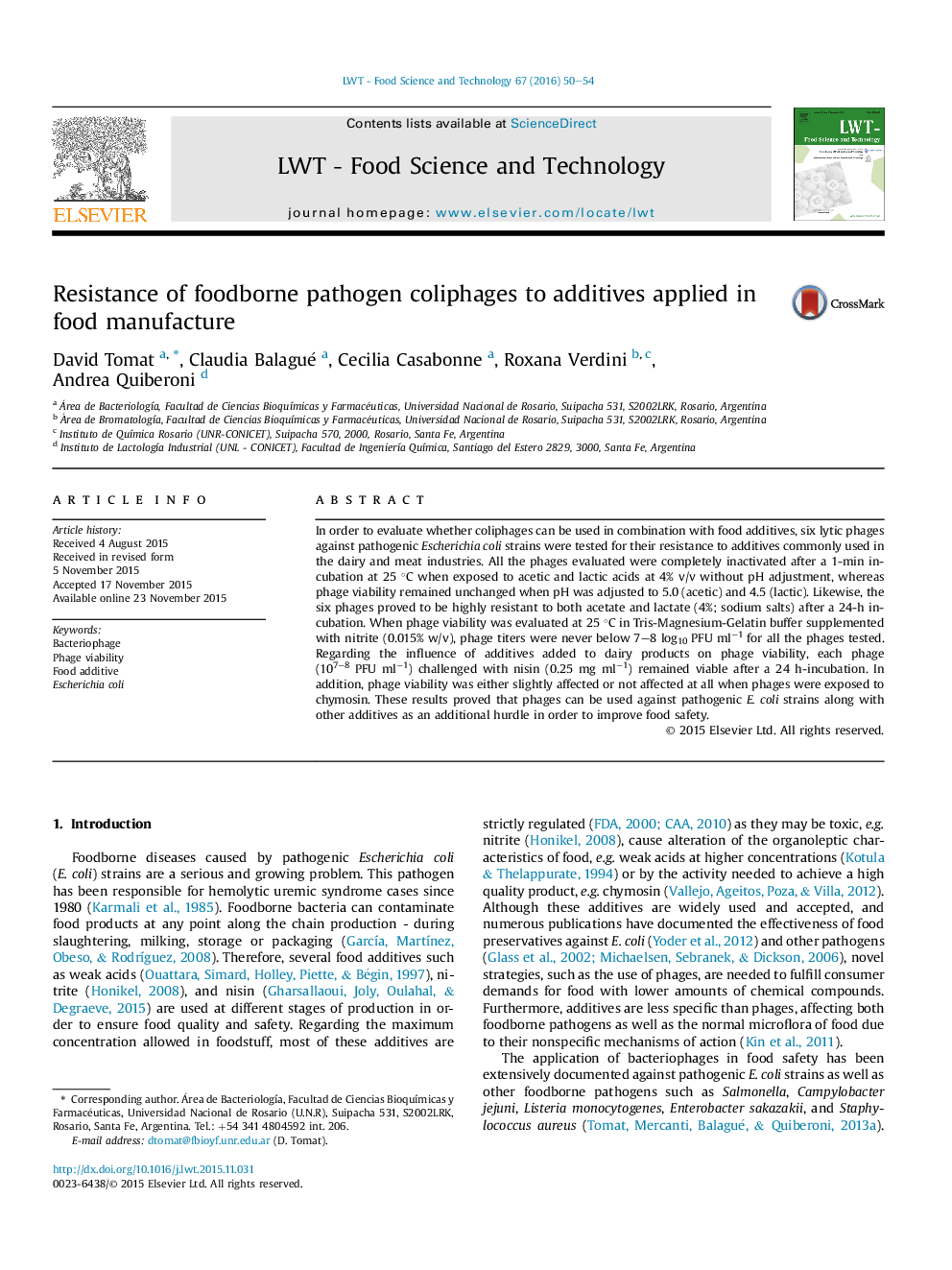| Article ID | Journal | Published Year | Pages | File Type |
|---|---|---|---|---|
| 4563810 | LWT - Food Science and Technology | 2016 | 5 Pages |
•Viability of six coliphages was evaluated.•All phages were completely inactivated when treated with acetic and lactic acid without pH adjustment.•All phages showed high viability against most additives tested.
In order to evaluate whether coliphages can be used in combination with food additives, six lytic phages against pathogenic Escherichia coli strains were tested for their resistance to additives commonly used in the dairy and meat industries. All the phages evaluated were completely inactivated after a 1-min incubation at 25 °C when exposed to acetic and lactic acids at 4% v/v without pH adjustment, whereas phage viability remained unchanged when pH was adjusted to 5.0 (acetic) and 4.5 (lactic). Likewise, the six phages proved to be highly resistant to both acetate and lactate (4%; sodium salts) after a 24-h incubation. When phage viability was evaluated at 25 °C in Tris-Magnesium-Gelatin buffer supplemented with nitrite (0.015% w/v), phage titers were never below 7–8 log10 PFU ml−1 for all the phages tested. Regarding the influence of additives added to dairy products on phage viability, each phage (107−8 PFU ml−1) challenged with nisin (0.25 mg ml−1) remained viable after a 24 h-incubation. In addition, phage viability was either slightly affected or not affected at all when phages were exposed to chymosin. These results proved that phages can be used against pathogenic E. coli strains along with other additives as an additional hurdle in order to improve food safety.
